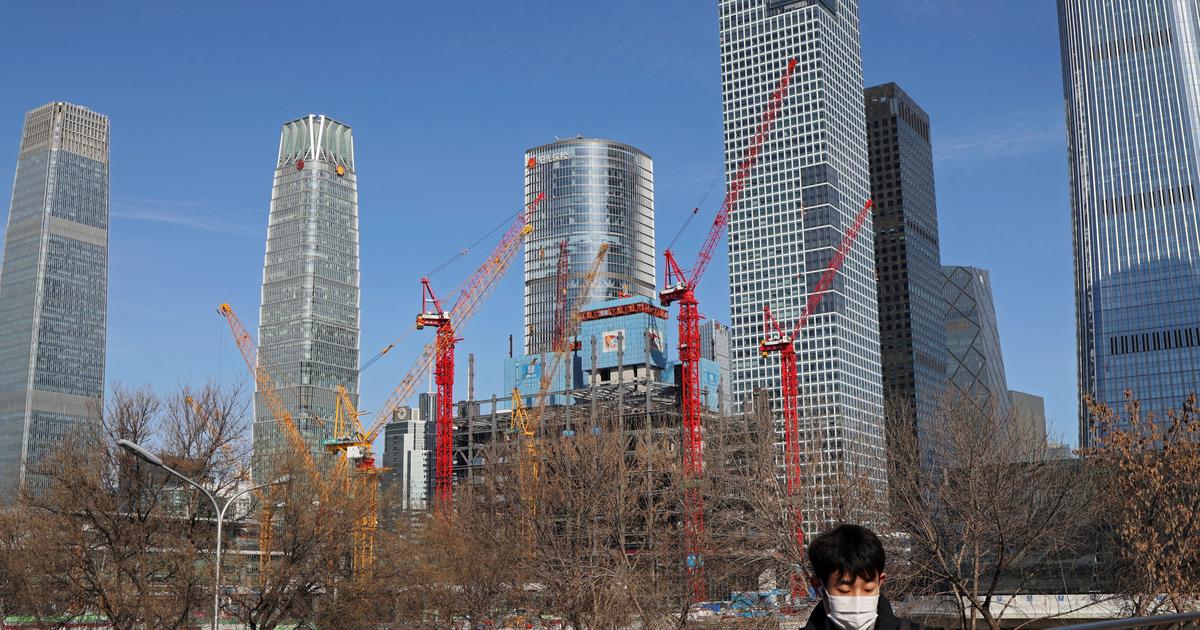The climate summit begins in Glasgow at the weekend.
The most important countries have sharpened their 2015 climate targets.
However, all of the commitments are not sufficient for the two-degree target.
Munich - It's been six years since almost 200 countries committed themselves to significantly reducing their greenhouse gas emissions in the Paris Climate Agreement. But shortly before the UN climate conference COP26 in Glasgow, which begins on Sunday, the nationally
determined contributions
(NDC) are still not ambitious enough.
Every five years, the member states have to sharpen their goals - and formulate them more and more ambitiously, if possible. But while the Paris Climate Agreement calls for global warming to be limited to below two degrees compared to the pre-industrial age, the current plans of the signatory states, following a UN survey, are heading towards a warming of 2.7 degrees this century. Achieving the ideal formulated in Paris of limiting the temperature rise to 1.5 degrees is becoming more and more distant, despite all the lip service.
A whole series of climate reports by various researchers in the last few weeks, however, have shown dramatic scenarios of warming beyond two degrees.
The earth will change drastically by 2100 if it continues to be treated as before.
The costs of doing nothing, it seems, are far higher than the costs that have to be spent on active climate protection.
Heated debates and climate protests can therefore be expected in Glasgow.
China: climate neutrality from 2060 - but emissions are not expected to decrease until 2030
The major industrial nations (G20) want to make new promises in terms of climate protection at their summit this weekend in Rome. They too are at odds about specific goals. The director of the Potsdam Institute for Climate Impact Research, Ottmar Edenhofer, recently suggested that the EU use its political capital and establish a new climate alliance with China and the USA.
The world's largest greenhouse gas emitter, China, submitted its updated climate targets to the United Nations on Thursday. The big hit did not materialize, however, it was Beijing's already known self-commitment to climate neutrality by 2060. Nevertheless, the new national climate protection contributions (NDC) have been sharpened, because in 2015 China only had an emissions peak "around 2030" and a reduction in the Greenhouse gas emissions per unit of economic output committed by 60-65 percent by 2030 compared to 2005. At that time there was no mention of climate neutrality. The new NDCs now see the emissions peak “before 2030”, which gives China some leeway.
"The planet cannot afford that this is the last word," criticized energy expert Li Shuo of Greenpeace East Asia.
China missed an opportunity to demonstrate ambition.
Beijing has to come up with better implementation plans in order to guarantee an emissions peak before 2025. ”However, Li also considers the climate plans of the western states to be inadequate, especially those of the USA.
USA: Currently active - but an uncertain climate partner due to the political division
The US problem is its unreliability due to the political division in the country. Under President Barack Obama, the US was a driving force behind the Paris Agreement. But Obama's successor Donald Trump led his country out of the Paris climate protection agreement and refused to international efforts to do more climate protection. Even today, large parts of his Republican Party deny that climate change is man-made or even exists. After Trump was voted out of office and President Joe Biden took office, the United States rejoined the Paris Agreement.
The current US NDCs envisage a 50 to 52 percent reduction in greenhouse gas emissions by 2030 compared to 2005.
This is compatible with the two-degree target formulated in the Paris climate protection agreement.
However, according to the analysis portal Climate Action Tracker (CAT), the US climate targets are not sufficient to achieve the maximum global warming demanded by climate protectors by a maximum of 1.5 degrees compared to the pre-industrial age.
Europe: The world's most ambitious climate goals
Six years ago, the European Union initially committed itself to reducing its greenhouse gas emissions by at least 40 percent by 2030 compared to 1990 levels.
In December 2020, the EU states updated this target - by the end of the decade, a reduction in emissions of "at least 55 percent" is planned.
This means that the EU is meeting the two-degree target according to the CAT.
In addition, the EU wants to be the first continent to become climate neutral by 2050.
A reference to the base year 1990 is important: because the USA, China and other countries relate their reduction targets to 2005 - a point in time at which emissions worldwide were already significantly higher than in 1990. The EU target can therefore be assessed as much more ambitious.
Great Britain, which has since left the EU, has set its goal of achieving climate neutrality by 2050 by law.
In December, the UK also announced that it would reduce its emissions by 68 percent by 2030 compared to 1990 levels.
According to CAT, the British contribution to climate protection would even be compatible with the 1.5 degree target.
India: No carbon neutral target announced yet
India is currently the third largest CO2 emitter in the world.
But this is mainly due to the enormous size of its population - although the so-called ecological footprint in the country is on average far below that of the populations of other industrialized countries.
In 2015 India committed to reducing its greenhouse gas emissions by 33 to 35 percent by 2030 compared to 2005.
The country has not yet submitted its updated NDC.
Russia: methane in the tundra and climate neutrality by 2060
Russia did not officially join the Paris Agreement on Climate Change until 2019, and the country presented its first NDC the following year.
This envisages a reduction in greenhouse gas emissions by 30 percent by 2030 compared to 1990 - which, according to CAT, is clearly "insufficient".
Kremlin chief Vladimir Putin recently announced the goal of achieving climate neutrality by 2060.
There are no details yet.
At Joe Biden's climate summit in the spring, Putin emphasized the importance of Siberian forests as a carbon sink.
One of the topics related to Russia is methane: the gas, which is highly greenhouse-enhancing, rises from melting permafrost soils in the Russian tundra, among other things.
Japan: Later entry into climate protection
Japan also jumped on the topic of climate protection rather late.
In 2016, Tokyo decided to reduce its greenhouse gas emissions by 26 percent by 2030.
When the country set the same goal in its updated NDC in March 2020, it drew sharp criticism from experts.
This month, the government of the new Prime Minister Yoshihide Suga finally presented more ambitious plans: According to this, Japan should achieve a reduction in its emissions of 46 percent compared to 2005 by 2030 - which, according to CAT, is in line with the two-degree target.
According to Suga, Japan wants to be climate neutral by 2050.
Climate conference in Glasgow: which countries could spoil the game?
Other countries are considered to be potential spoilers: Saudi Arabia, Iran, Brazil and Australia. Australia has huge natural resources and a climate-skeptical government. So far, there is no goal for climate neutrality. Iran is the sixth largest emitter of greenhouse gases and has not even ratified the Paris Agreement.
Brazil and Saudi Arabia recently announced climate targets, but both were more likely to hold the brakes on by then.
At Biden's climate conference, Brazilian President Jair Bolsonaro surprisingly announced climate neutrality by 2050.
Brazil will eliminate illegal logging in the Amazon rainforest by 2030 through strict enforcement of existing forest laws.
But the forests are still burning in Brazil, it is unclear whether Bolsonaro is serious.
A few days ago, Saudi Arabia, which is practically completely dependent on exports of fossil raw materials, announced climate neutrality by 2060 as a climate target.
The country has one advantage: In the sunny deserts there would be plenty of space for photovoltaic systems (ck, with material from AFP).



/cloudfront-eu-central-1.images.arcpublishing.com/prisa/DOOQ2YEAZJCSNITR6TA2ARDQT4.jpg)










